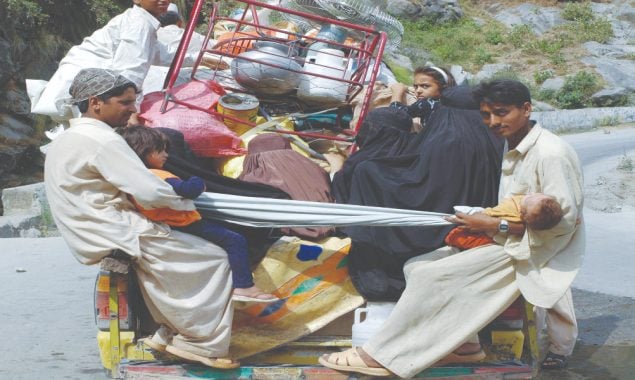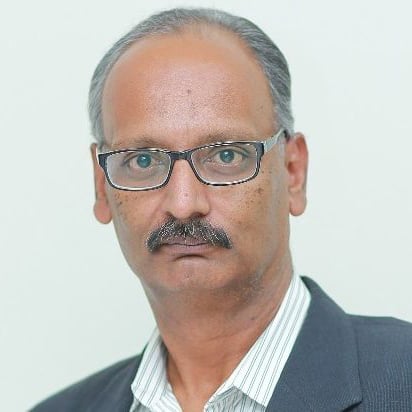
The government will face a tough time in sustaining the poverty level on the back of higher fuel prices, the rupee depreciation and an increase in the electricity and gas tariffs on regular intervals.
The latest poverty headcount based on the 2018/19 Household Economic Survey showed around 22 per cent of the estimated 227.9 million population is already living below the poverty line.
Special Assistant to the Prime Minister on Social Protection and Poverty Alleviation Dr Sania Nishtar said that the Cost of Basic Need (CBN)-based headcount registered a decline of 2.4 percentage points to 21.9 per cent in 2018/19, compared with 24.3 per cent in 2015/16.
The governments in Pakistan officially use CBN method to estimate the number of poor living below the poverty line.
“Between 2010/11 and 2018/19, the ratio of poverty also showed a declining trend at the national level, as poverty declined to 21.9 per cent in 2018/19 from 36.8 per cent in 2010/11,” she said, adding that the decline in poverty was witnessed both in urban and rural areas.
Meanwhile, the World Bank has projected the poverty rate in Pakistan to ease to 4 per cent from 4.8 per cent in FY22/23.
According to a recent report released by the World Bank, Pakistan’s lower middle-income poverty rate would also witness a decline to 33.8 per cent in FY22/23 from 37 per cent.
The World Bank has set the extreme poverty line at $1.9 per person per day; however, since 2017, the bank has also been reporting poverty rates for all the countries using two new international poverty lines, a lower middle-income international poverty line, set at $3.20/day, and an upper middle-income international poverty line, set at $5.50/day.
Similarly, the upper middle-income poverty rate has also been projected to ease to 76.2 per cent in FY22 and 75 per cent in the next fiscal year from 77 per cent.
Poverty reduction, one of the major sustainable development goals put forth by the United Nations in 2015, calls for Pakistan to take measures for lessening the problems of the poor and bring it down to half (12 per cent) from the existing 24.3 per cent.
But the recent hike in inflation has put brakes to the efforts needed to improve the condition of the poor, rather denting their already crippled lives.
Yes, the Covid-19 played its part in the deteriorating conditions, but the government’s policies to cope with the pandemic make the lives of the poor more miserable.
Looking at the historical data, it appears that, to some extent, poverty has declined in Pakistan but there is a need to sustain the economic growth around 6 to 7 per cent, as it is considered to be the key driver of poverty alleviation.
The official statistics have shown that in early 2000, Pakistan saw low poverty rates because the economy was growing at a significant pace, whereas after 2006, the GDP growth started to go down, resulting in an increase in the number of poor in the country.
Various surveys and studies conducted by different institutions indicate that Pakistan headcount index has consistently declined in the last two decades to 22.5 per cent in 2018/19 from 50.4 per cent in 2005/06. However, estimates show that poverty has declined in all provinces except Khyber-Pakhtunkhwa where it increased to 27 per cent in 2018/19 from 18.1 per cent in 2015/16, showing an increase of 8.9 percentage points. It reflects a significant downward movement of the vulnerable in the province.
Similarly, the study conducted by Nayab and Farooq in 2014 suggested that the Benazir Income Support Programme (BISP) did not have an impact on the household’s socioeconomic wellbeing across and over time. It has been observed that there is a need to give space to the poor to grow, as mere money handouts would not do so. A cash transfer cannot be a substitute for opportunity and exclusion from opportunity is the biggest reason for people staying poor.
Finally, Pakistan Institute of Development Economics (PIDE) took out a whole issue of its Policy and Research magazine in 2021 on the issues related to poverty. This includes measuring poverty by different methods to evaluate the impact of different models on poverty alleviation like the Social Action Programme (SAP) in the 90s and the different micro-financing schemes.
The official poverty rates have been estimated using the HIES surveys conducted by the Pakistan Bureau of Statistics.
Looking at the rural and urban categorisation of poverty estimates, it was found out that the rural poverty is significantly higher than urban. The reason for these higher poverty figures against rural areas could be a greater percentage of people, especially poor concentration in rural areas where they usually do not have access to health, education, and employment opportunities.

The provincial estimates somehow give a clear picture of poverty across Pakistan at the regional level. In 1998/99, poverty was at registered the highest in Khyber-Pakhtunkhwa at 71 per cent and lowest in Balochistan at 55.9 per cent but the trend reversed in 2018/19, as the lowest percentage of poverty, which is 16.3 per cent was recorded in Punjab and highest in Balochistan at 40.7per cent.
Many factors contribute towards such an alarmingly high figure of poverty in Balochistan, of which majors could be high levels of income inequality and low employment opportunities.
Poverty alleviation by 2030 is the main goal of the UN’s sustainable development goals; therefore, the identification of the poor and the evaluation of the extent of poverty have received considerable attention in the design of cost-effective poverty reduction programmes and safety nets.
The degree of poverty should be estimated to assess the budgetary needs and implications of safety nets and to evaluate these programmes.
The recent World Bank’s Poverty Outlook on Pakistan report showed there could be 39.2 per cent of the population currently living below the lower-middle income poverty line, compared with 35.7 per cent in the fiscal year 2019/20.
The outlook also warns that there could be two million people who may have fallen below the poverty line, including 40 per cent of the households suffering food insecurity in Pakistan.
The Planning Commission’s Annual Plan 2021/22 has also warned that after incorporating the impact of the Covid-19 pandemic, there could be 25.4 per cent people below the poverty line using the 2018/19 household income and expenditure survey.
This assessment also indicates that Ehsaas-led social protection initiatives may have reduced poverty by 2 percentage points; however, the challenge is much bigger.
The rise in poverty in Pakistan will undoubtedly impact the abilities of the common man to invest in health, education and essential social services and failure to overcome these challenges would put Pakistan’s efforts toward achieving Sustainable Development Goals at risk.
(The writer is the Assistant Editor, Business Desk at the BOL News. Views expressed by him are his own and do not reflect the newspaper’s policy)
Read More News On
Catch all the Business News, Breaking News Event and Latest News Updates on The BOL News
Download The BOL News App to get the Daily News Update & Follow us on Google News.




